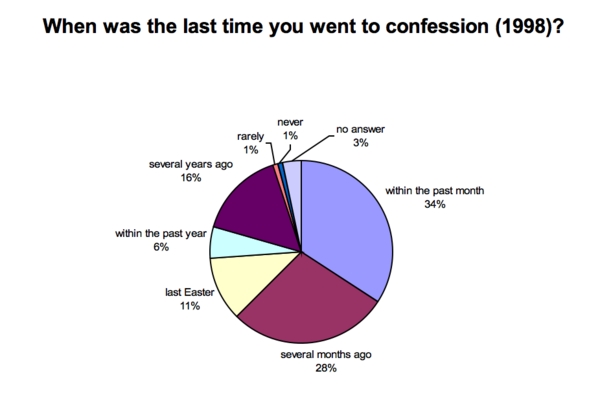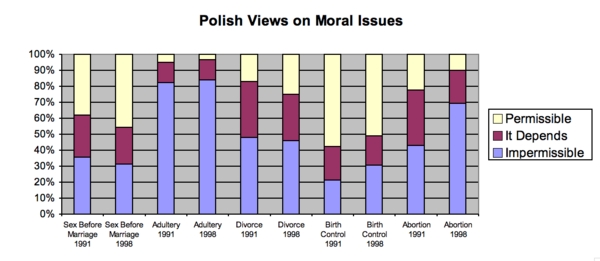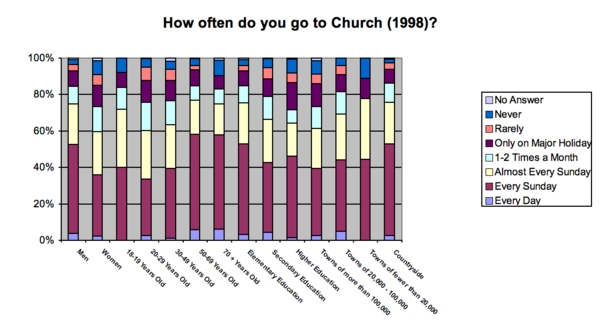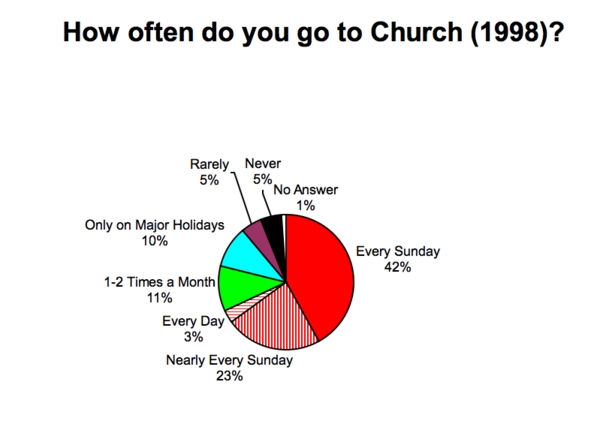Statistics on Catholicism in Poland after the fall of Communism




Annotation
These figures show the fragility of Catholicism in Poland after the communist era. Whether questioned about matters of doctrine or lifestyle, large numbers of Poles agreed with the stated positions of the Roman Catholic Church. Discussing these figures will help students understand that the image of “Catholic Poland” is more complicated than a casual observer might assume. Some scholars interpret this apparent shift in beliefs between 1991 and 1998 as a sign that the Church has been able to use the post-communist public sphere to propagate its own point of view more effectively, with Poland moving towards a Catholic hegemony to rival the old (always incomplete) communist hegemony. Others have suggested that once unrestrained by communist-era restrictions, the Church could inform the faithful more completely about the views that good Catholics were supposed to articulate, so that people who felt themselves to be Catholic were less likely to differ from the Vatican’s official line.
This source is a part of the The Catholic Church in Poland, 1950-2000 teaching module.
Credits
Created by Brian Porter from Religijność Polaków 1991-1998, ed. Witold Zdaniewicz, (Warsaw: Instytut Wydawniczy PAX, 2001).